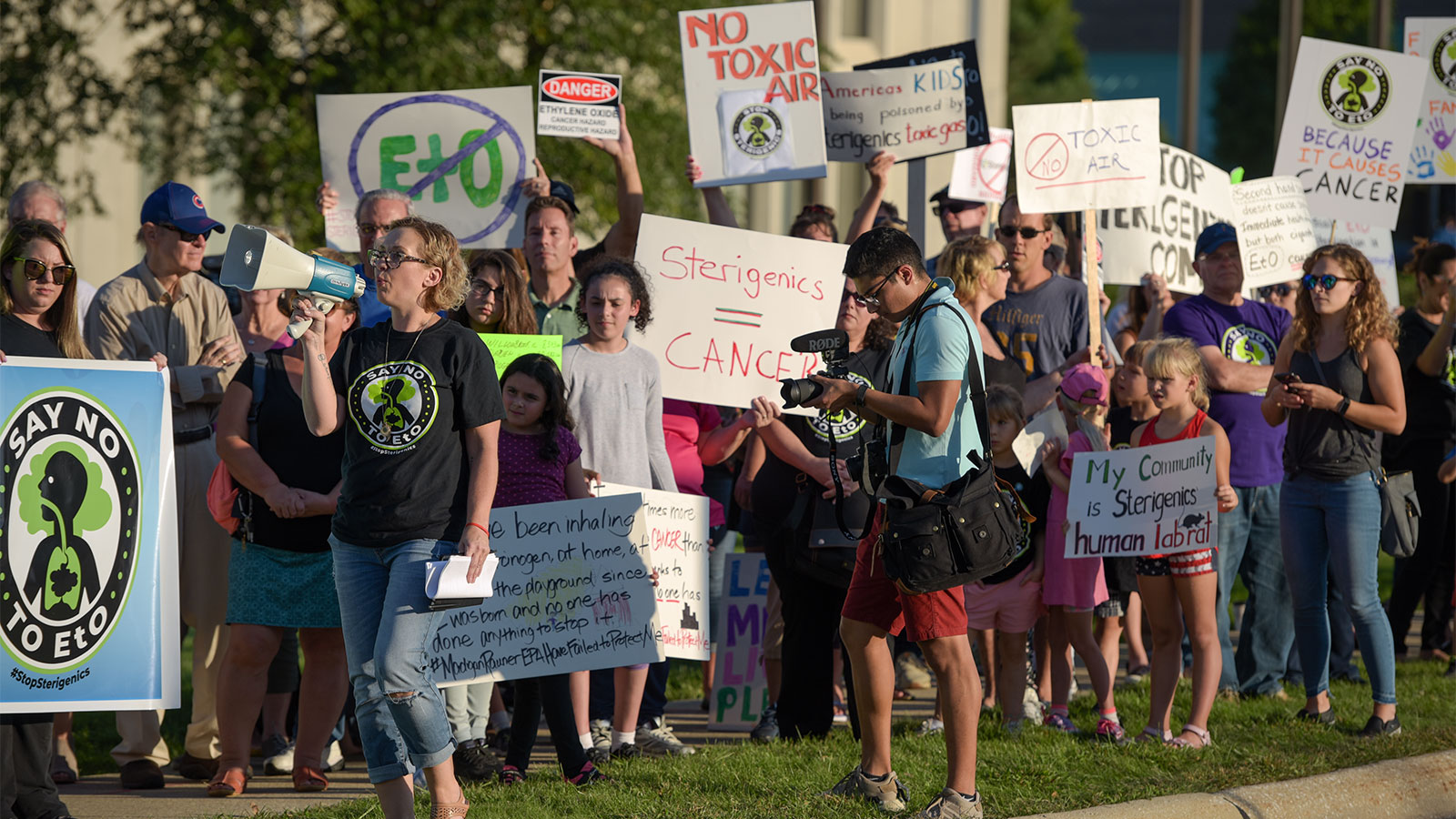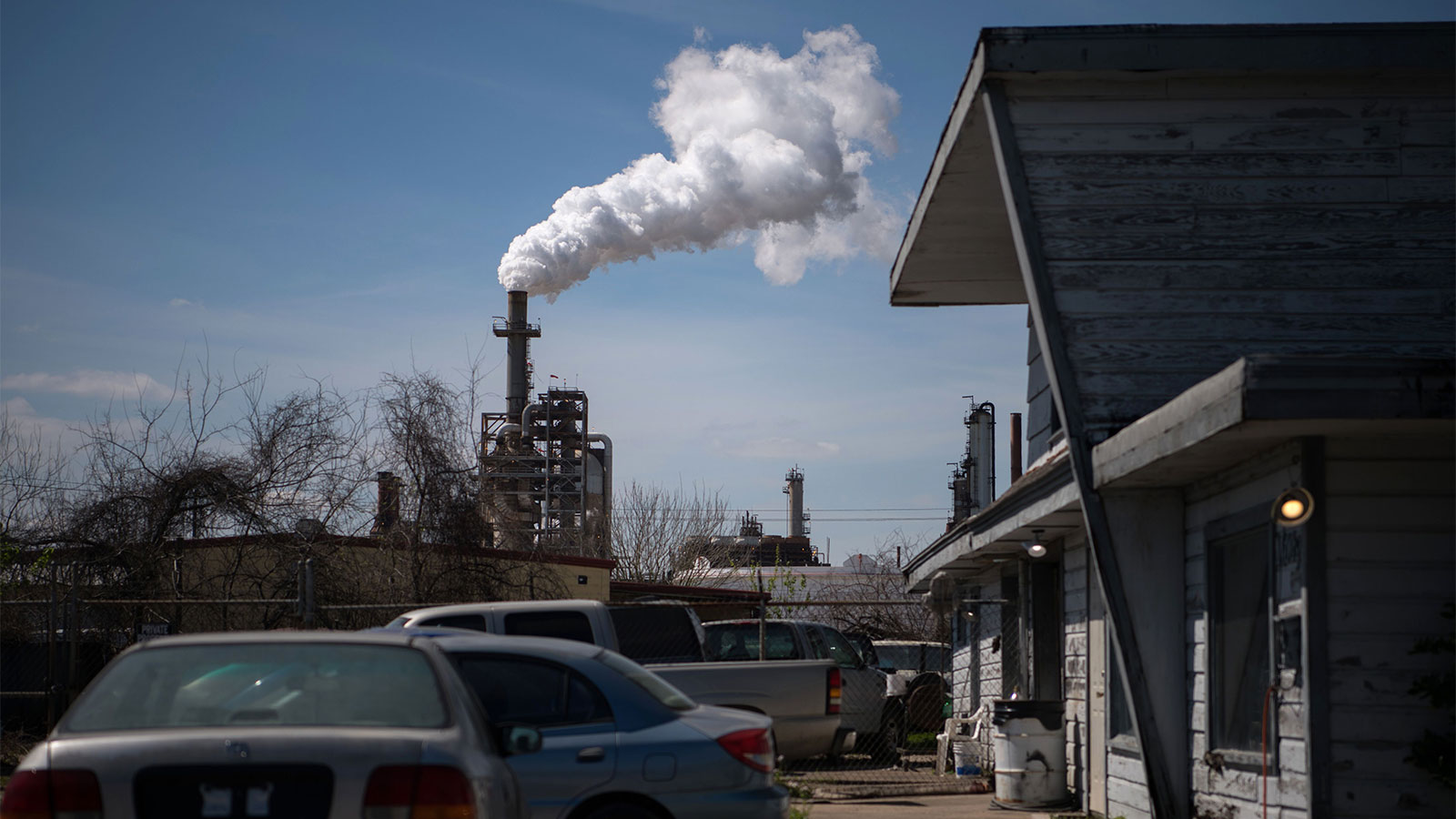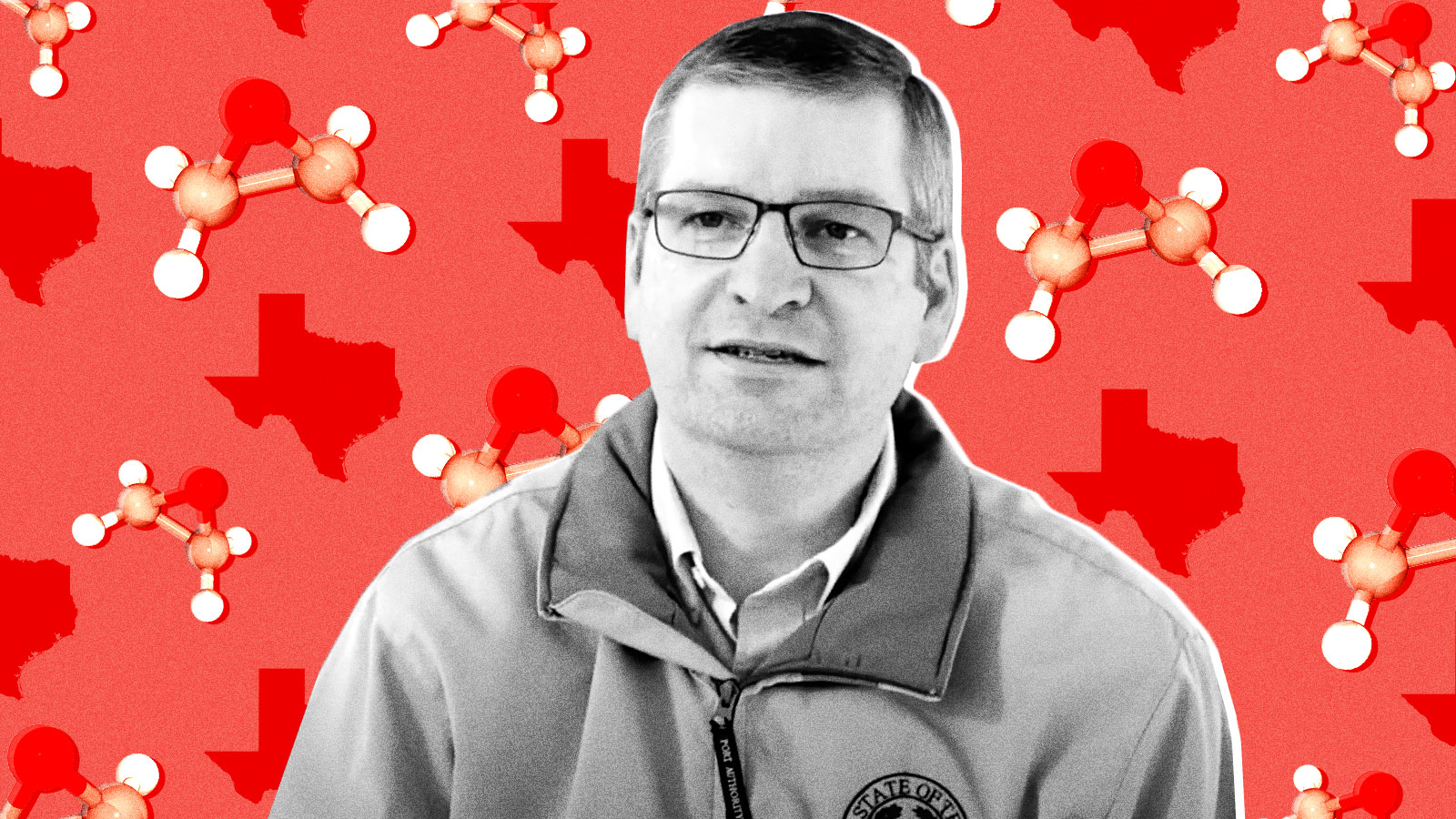When the Trump administration tapped Michael Honeycutt to lead the Environmental Protection Agency’s Science Advisory Board in 2017, environmental and public health advocates expected that he would be a loyal foot soldier, supporting the administration’s deregulatory agenda at every opportunity that came before the influential panel, which provides scientific advice to inform pending environmental regulations.
Advocates’ fears were based in large part on Honeycutt’s tenure in Texas. As the chief toxicologist for the Texas Commission on Environmental Quality (TCEQ), the state environmental protection agency, Honeycutt had developed a reputation for holding fringe views on air pollution. For instance, just a few years prior, he had argued that increasing smog levels might have health benefits — a view at odds with decades of research.
“Very many of us were alarmed and held expectations about his tenure lower than the Mariana Trench,” recalled John Walke, director of the Natural Resources Defense Council’s clean air, climate, and clean energy program.
Those expectations, however, were exceeded. Walke now says that Honeycutt has played the role of an “honest broker” during his time as facilitator on the advisory board. Though the board has taken some deregulatory stances over the last three years — including quietly taking steps to weaken cancer guidelines — in a handful of high-profile cases it has also publicly repudiated the Trump EPA’s efforts to rewrite Obama-era clean water rules, roll back tailpipe emission regulations, limit the research that can be considered when crafting regulations, and scrap mercury emission limits for coal plants. In those cases, advocates agreed that the board put science before deference to industry and the president.
Honeycutt’s term on the board is up in October, and he is not seeking reappointment. His reputation as an “honest broker,” however, could be in jeopardy, thanks to an arcane public records battle quietly playing out in Texas courts this summer.

Protestors outside the headquarters of Sterigenics, a company that operates facilities emitting ethylene oxide, in Oak Brook, Illinois. Mark Black / Chicago Tribune / Tribune News Service via Getty Images
The dispute concerns Honeycutt’s role in scaling back the state’s assessment of the health risks of a carcinogenic chemical called ethylene oxide, which is used to sterilize equipment and to produce antifreeze and certain plastics. According to the EPA, there is “strong evidence” that exposure to ethylene oxide increases the risk of breast cancer, lymphoma, and leukemia. In Willowbrook, Illinois, state officials linked higher rates of lymphatic cancer among girls and women to their homes’ proximity to a facility that emitted ethylene oxide. The facility shut down last year, and Illinois later passed legislation requiring facilities to reduce emissions of the carcinogen by 99.9 percent. Earlier this month, Georgia Governor Brian Kemp, a Republican, signed legislation requiring facilities to report spills and emissions of the chemical. But as other states moved to implement stricter regulations on ethylene oxide facilities, Texas actually increased the amount of ethylene oxide it considers safe for human exposure by more than double — and Michael Honeycutt was at the center of that effort.
About half of the plants that emit ethylene oxide are in Texas and Louisiana, and many are located in communities of color. The EPA’s National Environmental Justice Advisory Council wrote last year that it was “very concerned” about the “disproportionate exposures” experienced by these communities.
Will Honeycutt’s legacy as an “honest broker” be undercut by the weaker ethylene oxide risk factor he helped develop? The answer may be in undisclosed emails he sent about the chemical, which are now at the center of a legal battle in the Lone Star state.
Skeptic-in-chief
Honeycutt joined TCEQ’s toxicology division in the 1990s. As head of the division years later, he was instrumental in devising technical arguments that challenged Obama-era regulations. For instance, Honeycutt questioned the Obama EPA’s strengthening of smog regulations, making the argument — contrary to scientific evidence — that reducing ozone levels would result in negligible health benefits in part because most Americans spend the majority of their time indoors. In one interview, he went so far as to suggest that reducing ozone levels might result in worse public health outcomes.
“I haven’t seen the data that says lowering ozone will produce a health benefit,” he told the Texas Tribune in 2014. “In fact, I’ve seen data that shows it might have a negative health benefit.”
Similarly, Honeycutt argued that the Obama administration was “overstating” the risk of mercury exposure, simply because Japanese people eat more fish than Americans on average but have higher IQ scores and lower rates of heart disease.
Some of these defenses of weaker environmental regulations were used in Texas’ legal arguments when it challenged EPA rules in court. As a result, when Honeycutt campaigned to be appointed to the EPA’s Clean Air Science Advisory Committee in 2015 and 2016, environmental and public health advocates opposed it, and the Obama administration did not pick him. But after Trump’s election in 2017, then-EPA administrator Scott Pruitt picked Honeycutt to lead the Science Advisory Board.
“We were crushed,” said Elena Craft, a toxicologist with the nonprofit Environmental Defense Fund in Austin, Texas, who has worked with Honeycutt for more than a decade.
Even as Honeycutt displayed some even-handedness in his work for the EPA board, Craft said that his deregulatory disposition remained the same in his Texas work. After Hurricane Harvey hit the Texas coast, Honeycutt turned down an offer from NASA to conduct additional monitoring of air emissions even though the hurricane had caused catastrophic chemical spills and fires in the Houston area.
Craft pointed to TCEQ’s efforts to lower ethylene oxide health thresholds as another example of the agency’s misplaced priorities. Last year, TCEQ released a scientific assessment that justified lowering the level of ethylene oxide the agency considered harmful to public health. The agency had previously considered an ethylene oxide concentration of 1 part per billion sufficient to cause adverse health effects, but it wanted to quadruple that threshold. That would make the new threshold three orders of magnitude weaker than the EPA’s limit for the chemical.
To justify weakening the threshold, the agency initially relied heavily on research by Ciriaco Valdez-Flores, an industrial engineering professor at Texas A&M University. When the EPA set guidelines for ethylene oxide in 2016, it found that a 2010 Valdez-Florez study had relied on a “crude exposure assessment” with “a high potential for exposure misclassification” and that the statistical model used did not fit the data well. Nevertheless, TCEQ contracted with Valdez-Flores to do additional work on the chemical and used his work to support the initial proposed factor of 4 parts per billion. Researchers with the Environmental Defense Fund and the Union of Concerned Scientists say that TCEQ’s use of Valdez-Flores’ work and an inappropriate model to fit the data are the main reasons the agency arrived at this weaker proposed risk factor.
As Honeycutt was working with Valdez-Flores, he was also being courted by the chemical industry. In 2018, he gave a keynote address for the American Chemistry Council, a powerful industry group that had been pushing to weaken ethylene oxide standards for years. (It has also spent millions lobbying against stricter regulation of pesticides, flame retardants, and other chemicals.) A few months later, TCEQ staff met with American Chemistry Council toxicologists. A presentation given by industry representatives during this meeting was partially titled “Use the estimate from Valdez-Flores et al.” It encouraged the agency to reject the EPA’s methodology and analysis in favor of the controversial alternative.
Honeycutt’s close association with the American Chemistry Council and his reliance on Valdez-Flores aroused the suspicion of Neil Carman, a former TCEQ inspector who now works for the Sierra Club’s Texas chapter. Carman suspected that emails between Valdez-Florez and Honeycutt and other draft documents supporting the scientific assessment could reveal why the agency hired Valdez-Flores and how his work was used. But to his surprise, the agency declined to provide those documents, citing exemptions in Texas public records law.
Now that fight is before a state court judge. Attorneys representing the Sierra Club have been allowed to view the underlying documents and emails that the agency refused to provide in order to prepare for trial, but those materials have not yet been made public and the attorneys are barred from discussing the documents. Ultimately, what they learn from the documents may shed light on industry’s effort to weaken emission limits for the toxic substance nationwide, putting tens of thousands of people in Texas, Louisiana, Illinois, and elsewhere at a higher risk for lymphoma and breast cancer.
“What TCEQ is doing in supporting the American Chemistry Council and the Valdez-Flores view is downplaying breast cancer risk in women and cancer in children,” said Carman.
The Environmental Defense Fund’s Craft agreed. “If this is really about setting healthy thresholds for ethylene oxide, then why aren’t the scientific communications around establishing those thresholds available?” she said. “My assumption is that it’s something that would obviously make the agency look bad in some way or undermine Honeycutt’s reputation.”
In May, the agency finalized the risk factor for ethylene oxide and settled on 2.4 parts per billion instead of its original proposal of 4 parts per billion. It ultimately did not use the Valdez-Flores study, finding that “there were aspects that were not ideal.”
Ryan Vise, a spokesperson for TCEQ, said that there is “nothing untoward” in the communications between Honeycutt and Valdez-Flores and that the agency protects internal deliberations in order “to foster open and direct discussion to ensure that agency policy is grounded in the best science.” The suggestion that TCEQ “has any other motive for withholding its internal communications is false,” he said. He also pointed out that, while the agency contracted with Valdez-Flores to provide analysis, they relied on the same datasets as the EPA and ultimately did not use the 2010 Valdez-Flores study.
Vise said that now that the 2.4 parts per billion value has been finalized, the agency can use the higher value to review air quality permits for chemical manufacturers and sterilization companies in Texas, which are responsible for about half of all emissions of ethylene oxide nationwide. He added, however, that the new value has not yet been put into use.

The LyondellBasell refinery in the Houston area is one of the top emitters of ethylene oxide in the country. LOREN ELLIOTT / AFP via Getty Images
Carman said that understanding TCEQ’s process in determining the less strict guideline is critical because of the agency’s national influence. For one, Honeycutt was appointed by the Trump administration to head the EPA’s Science Advisory Board. In addition, according to documents obtained by the Chicago Tribune, TCEQ had “indicated its receptiveness” to challenging the EPA’s stricter ethylene oxide guideline in discussions with the American Chemistry Council. Further, industry groups have pointed to Texas’ reasoning when arguing to fight stricter rules for ethylene oxide emissions in other states. In Illinois, industry toxicologists told state lawmakers to rely on TCEQ’s analysis and reject a bill that imposed stricter conditions on ethylene oxide facilities.
“You don’t have to trust me,” the industry toxicologist said. “I’m asking you to reach out to another state.”
Has it been 10 days?
The current records battle in court is a result of TCEQ suing the state attorney general’s office. That’s because, after the agency declined to release the documents to the Sierra Club, the environmental group appealed to the attorney general, who is responsible for enforcing the state’s public information law. In a rare move, the attorney general sided with the Sierra Club instead of his own state. In order to keep the documents confidential, TCEQ was left with no choice but to sue the attorney general’s office. The Sierra Club is now an intervenor in the case.
Ultimately, whether the court compels TCEQ to release the emails between Honeycutt and Valdez-Flores may come down to an arcane rule in Texas’ public records law. State law requires agencies to notify the attorney general’s office about any records it plans to withhold within ten business days of the original request. Carman submitted the request on July 1, and the agency sent a letter to the attorney general on July 17, detailing the records it planned to withhold. In calculating the ten-business-day window, TCEQ excluded July 5, but the attorney general’s office and the Sierra Club dispute the claim that July 5 was not a business day. Though July 5 was not a state holiday, TCEQ claims that it (as well as the attorney general’s office) was closed that day in observance of July 4.
If an agency fails to appeal to the attorney general’s office to withhold documents within ten business days, the information is presumed public. As a result, the attorney general sided with the Sierra Club and, in turn, TCEQ sued over the decision. In court filings, attorneys for TCEQ said that state laws exempt records about deliberations that inform decision-making from being released. The email communications between TCEQ staff and Valdez-Flores fall under this category and “could also have policy implications that may impact future open discussions and evaluations of other [scientific assessments],” they wrote. The judge has set a hearing for summary judgement in December.
Carman pointed to cancer clusters in Illinois, where activists have successfully shut down plants that emit ethylene oxide, to underscore the importance of TCEQ releasing the documents.
“Why are they hiding this?” he asked.




